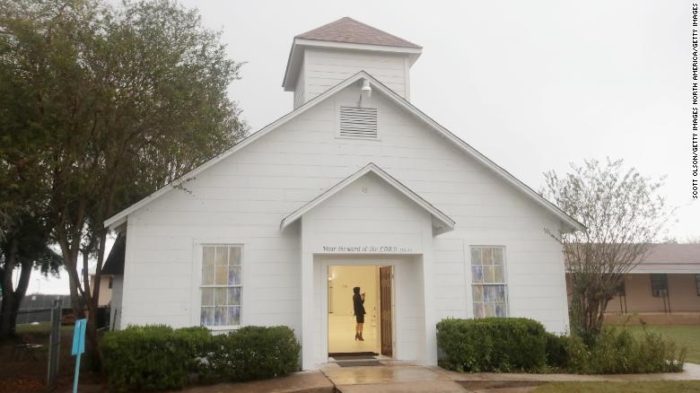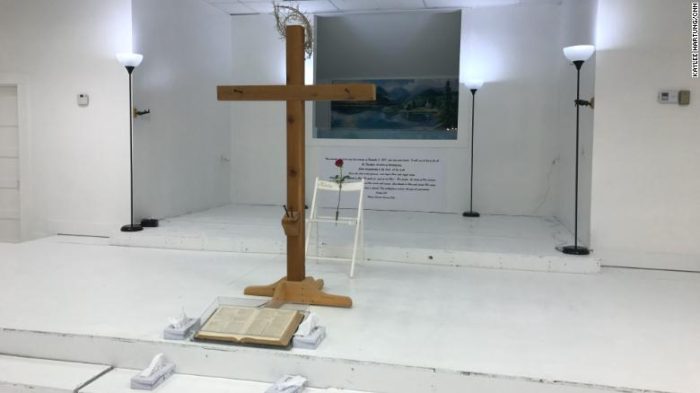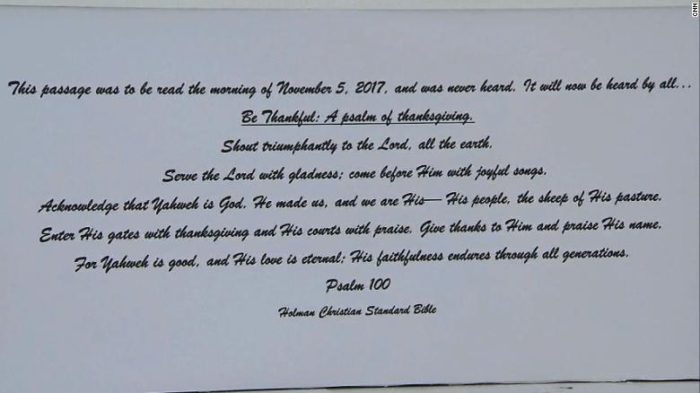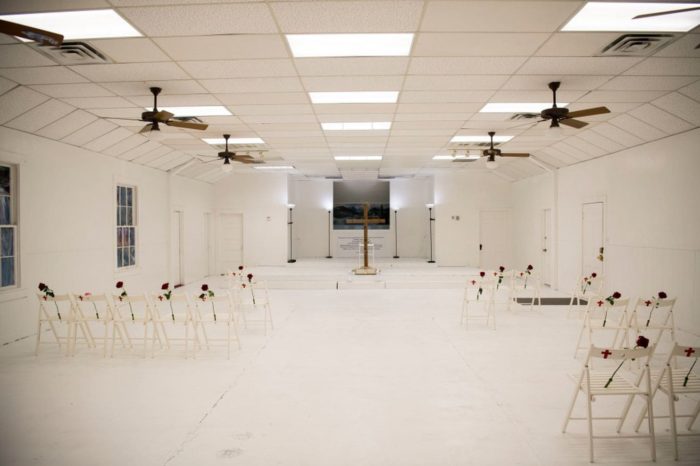
The church is empty; its walls are painted white. There are 26 chairs placed around the room, where members of a congregation once sat in pews with their eyes closed and their heads bowed in prayer. On each chair, except for one, there is a name painted in gold, as well as a dark red rose, secured in an upright position by the strong, yet ephemeral binds of a gauzy white ribbon. On the excepting chair, the rose is smaller — a sweet, soft pink instead of the vibrant red that appears on the other 25. In lieu of a pulpit, the elevated platform where a preacher might stand when speaking, is a life-sized wooden cross, illuminated from behind by four pillars of light. A bible, placed at the foot of the cross, is held open, fixed to a single page, as recorded voices of the absent churchgoers reverberate words of prayer and of thanksgiving. On the back wall, Psalm 100, a psalm for giving grateful praise, is inscribed in black.
In the wake of incomprehensible tragedy, a small Texas community has created a memorial and temporary work of art that, in its pure silence and stillness, speaks volumes to a nation plagued, in recent times, by an inability to listen.
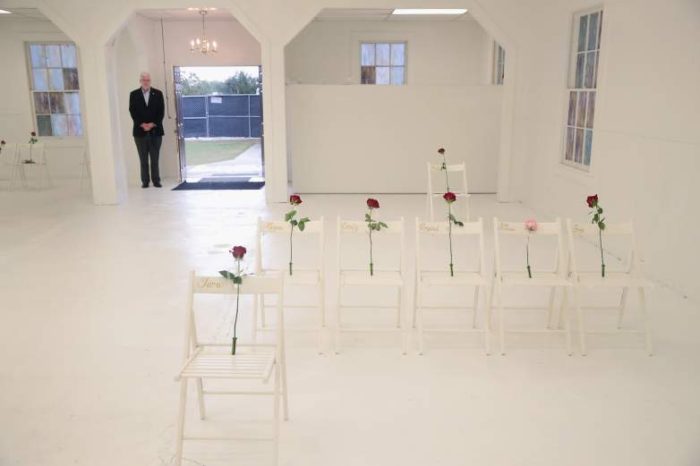

It is the hope of the space’s creators that through the Sutherland Springs First Baptist Church memorial, dedicated to the 26 lives (25 men, women, and children – signified by the red roses, as well as 1 unborn baby – signified by the pink) lost in the eponymous shooting on November 5th, members of the congregation, the town, and the nation at large may find a path to healing. The church space is now open to the public and serves as a moment captured in time, emptied of its painful content, and filled with light. The vestiges of the past can still be seen, but their context has been rewritten — a salve has been applied to a wound, where a scar will undoubtedly form. The Sutherland Springs monument cannot remedy what has happened, but it can help to touch the hearts of all those affected.
Although there is much contentious political dialogue surrounding the event, it is my personal belief that it is better, out of respect to the lives lost, to not remark upon it at this time. If anything can be agreed upon, it is that at the center of this art-memorial is the presence of humanity and for those who believe, God.
